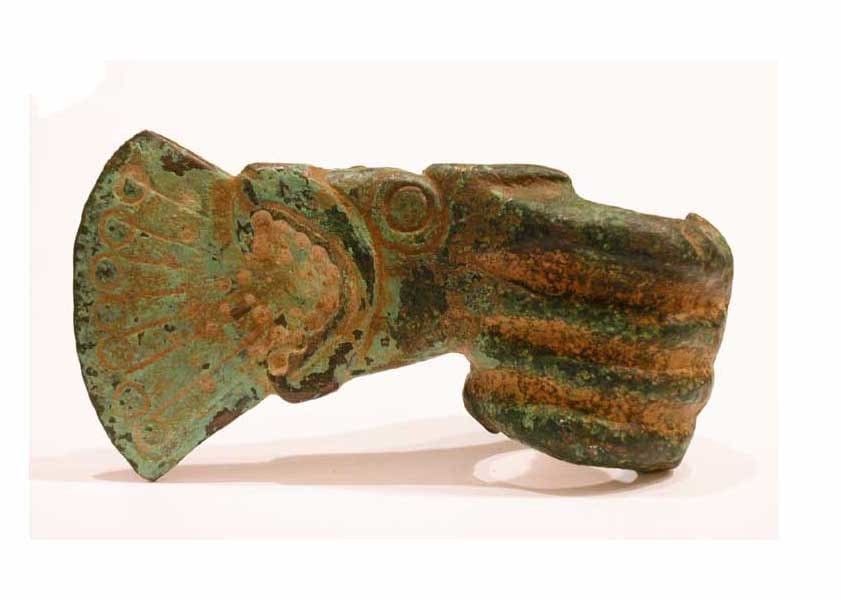Scythian Bronze Axe Head, 500 BCE - 400 BCE
Bronze
4.75 x 2.625 x 1.625
X.0463
Further images
Scythians was the name used by ancient Greek writers to describe the various nomadic tribes of southeastern Europe and Asia who dwelled north of the Black Sea, between the Carpathian...
Scythians was the name used by ancient Greek writers to describe the various nomadic tribes of southeastern Europe and Asia who dwelled north of the Black Sea, between the Carpathian Mountains and the Don River, in what is now Moldova, Ukraine, and western Russia. The name was also more generally applied to all the nomad tribes who inhabited the steppes eastward from what is now Hungary to the mountains of Turkistan. Scythians kept herds of horses, cattle, and sheep, lived in tent-covered wagons, and fought with bows and arrows on horseback. They developed a rich culture characterized by opulent tombs, fine metalwork, and a brilliant art style. The artistry and fine condition of this bronze axe head suggests that it was not used for warfare, but for ceremonial rituals likely related to the well-being of the herd. The Scythians were intimately linked to the lands they traversed and the fauna that inhabited them. Thus, their art often relays natural themes, with the stag among the most popular motifs. This axe head has taken the form of the head of a beast, likely as lion. From its open mouth emerges the blade, radiating outwards like the feathers of a peacock. Elegantly incised lines suggest the pedals of a flower, contrasting to the incised eyes and mouth of the lion. The bronze has acquired a rich light green patina over the centuries, enhancing the beauty of this ancient artifact.





